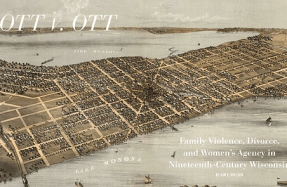
A light rain was falling in Washington, DC, as the nine members of the US Supreme Court gathered in the old Senate Chamber of the Capitol on the morning of March 19, 1874.1 The justices worked their way through a lengthy docket of business items and cases, including several regarding land ownership. One involved a jointly held land claim in Minnesota; a dispute arose after one landowner assumed ownership over a home on the property and began to charge the other as his “tenant,” later evicting him.2 Another had to do with a tract of land in Bastrop County, Texas, that had been used as collateral to pay the balance on a group of enslaved people during the Civil War. After the war, when the enslaved people gained their freedom, the man who had sold the enslaved people claimed the land as payment, but ownership came into dispute when the deed could not be found.3 In both cases, the Supreme Court was asked to reconsider a lower court’s decision based on technical aspects of the case; jurisprudence was more important than the human actors involved.

The last matter on the docket also involved land. It came from the Eastern District of Wisconsin, an appeal of a civil case on the part of the United States as the plaintiff against Wisconsin lumberman George Cook, the defendant. The United States had charged Cook with illegally purchasing 200,000 board feet of sawlogs from members of the Oneida Nation of Wisconsin. At the Wisconsin trial, Cook maintained that he had a signed contract with the Oneida Nation’s leaders to purchase the logs. The United States denied that the nation had the right to enter timber-cutting contracts for commercial purposes on its own reservation. The reason, it argued, was that the logs—and, in fact, the trees and land—were the property of the United States. The Oneida had merely “the right of occupancy.”4
As the clerk of court called “Oyez, oyez,” the justices readied themselves to hear oral arguments. At one table, Solicitor General Samuel F. Phillips prepared to argue for his client, the United States. The other table, set aside for the defendant, was empty. Neither Cook nor his counsel were present; Cook was effectively forfeiting his right to convince the Court of his position. Phillips laid out the argument for the United States without opposition. The Court adjourned and a few weeks later delivered a unanimous decision for the United States.5 This decision laid the groundwork for subdividing reservations into individual allotments across Wisconsin—an act that damaged Native sovereignty for all of the nations within the borders of Wisconsin.
Conspicuously absent at the hearing that day was the Oneida Nation of Wisconsin. The case of United States v. Cook was, on its face, about logs and who could purchase them. In reality, it was about treaty rights and sovereignty. To reach a decision in the case, the Court had to examine the terms of two treaties: an 1831 treaty between the Menominee Nation and the United States and an 1838 treaty between the Oneida Nation of Wisconsin and the United States. The Court’s task was to interpret both treaties in line with earlier Supreme Court decisions, including a trio of federal Indian law cases decided by the John Marshall–led Supreme Court in the 1820s and 1830s. In an interesting twist, a new chief justice, Morrison Waite, had been confirmed on March 4, just two weeks before US v. Cook was heard. The Waite court came to be known for its judgments against civil rights, including women’s right to vote in 1875 and the right of Black men in






